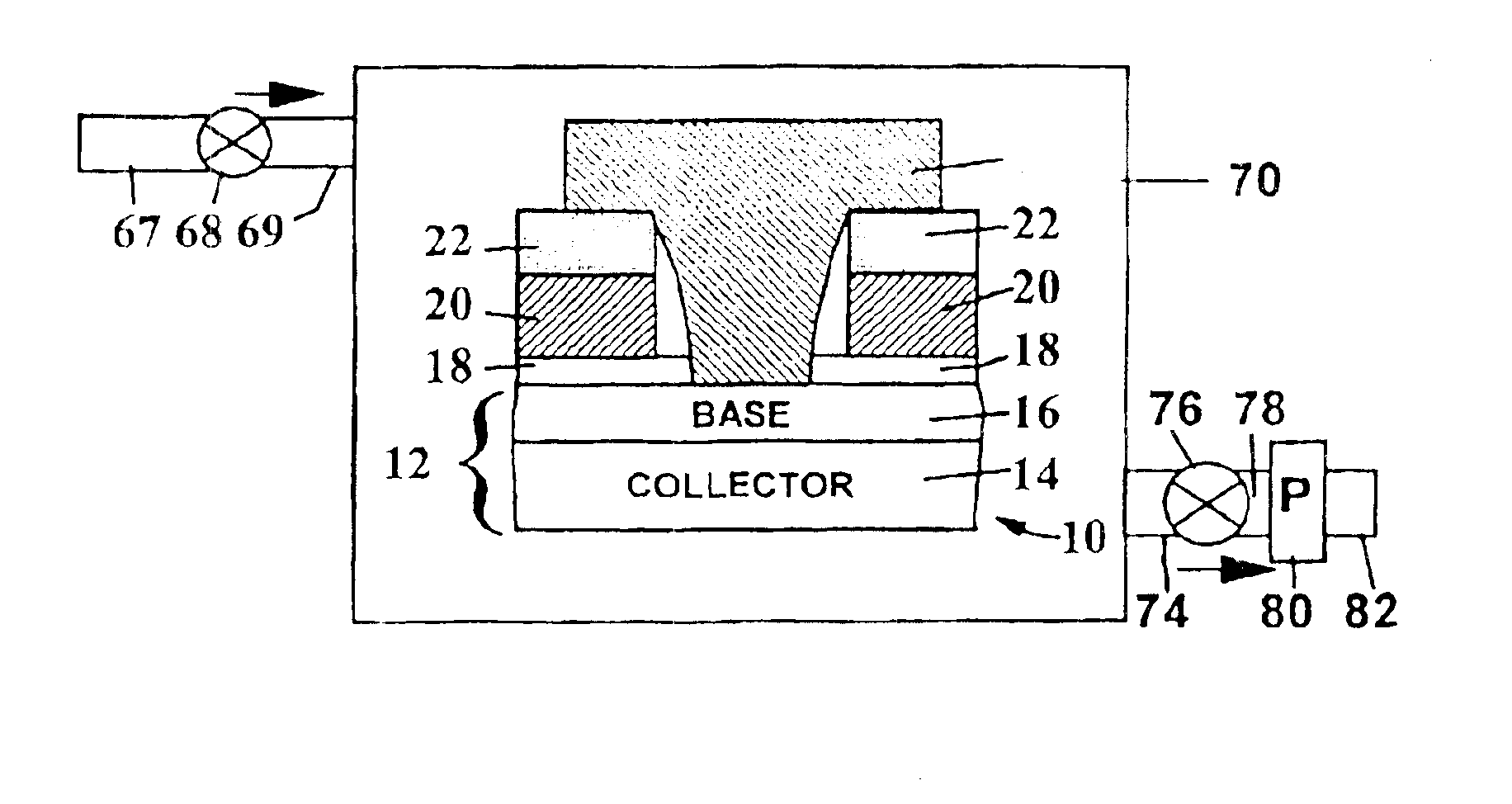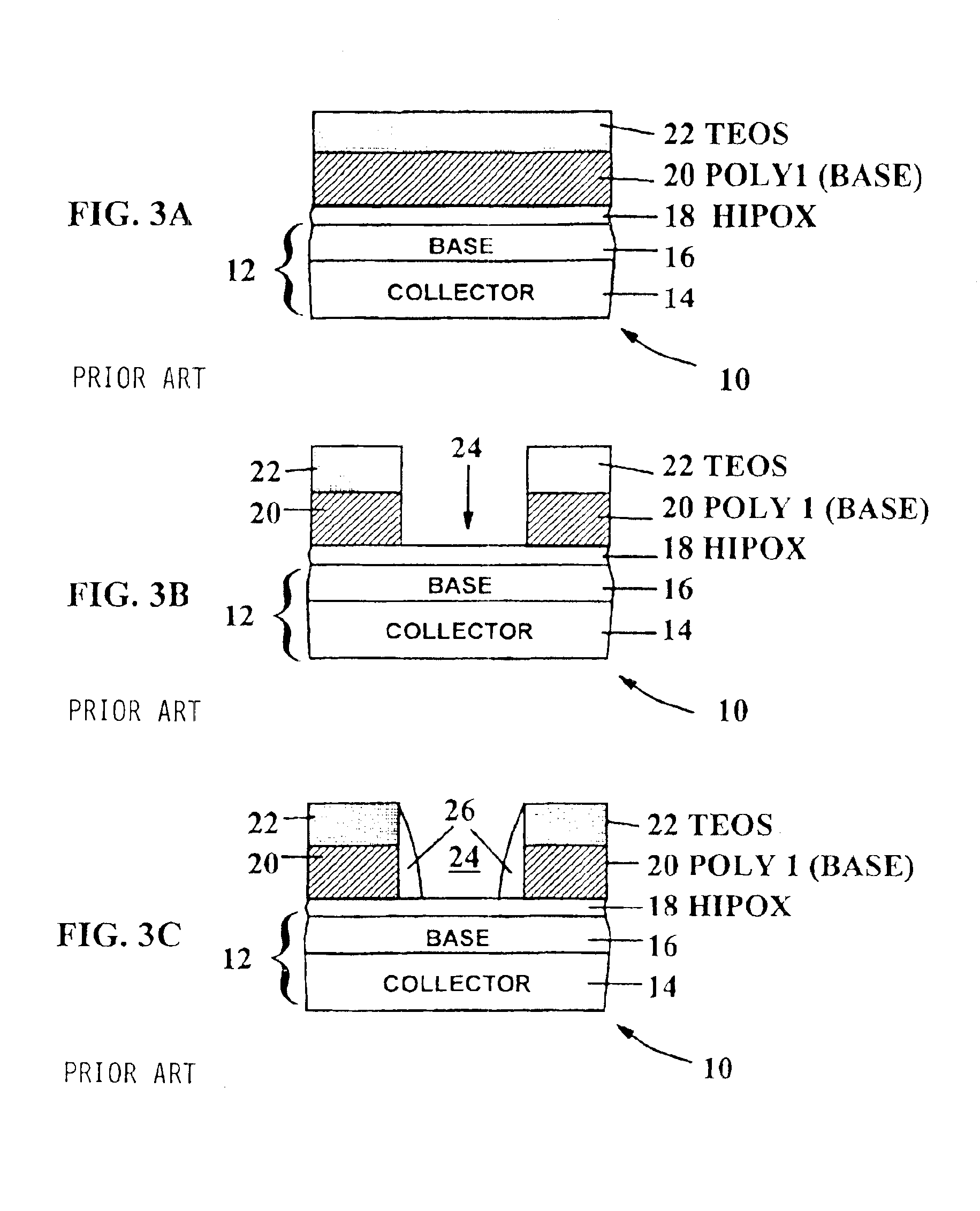Low defect pre-emitter and pre-base oxide etch for bipolar transistors and related tooling
- Summary
- Abstract
- Description
- Claims
- Application Information
AI Technical Summary
Benefits of technology
Problems solved by technology
Method used
Image
Examples
Embodiment Construction
Vapor Phase Etching Process
(I) Process Sequence
FIGS. 4A-4I illustrate a process of vapor phase etching (i.e. using a dry etching process) in accordance with an embodiment of this invention, when manufacturing the type of bipolar structure discussed above in connection with FIGS. 3A-3E. This process overcomes the problems of complete removal of the TEOS layer 22 and undercutting of the HIPOX layer 18.
The structure formed in FIGS. 4A-4C is identical to FIGS. 3A-3C, with the same steps performed as described above, and with repeated reference numbers referring to identical elements.
FIG. 4D illustrates the result after commencing a step of precleaning of device 10 of FIG. 1A. The precleaning starts with introduction thereof into a sealed COR reaction chamber 44 in which a Chemical Oxide Removal (COR) process uses gas phase reactants to perform a self-limiting etch that is adjustable by controlling the parameters in the COR reaction chamber 44. The COR etching process employed in the pre...
PUM
 Login to View More
Login to View More Abstract
Description
Claims
Application Information
 Login to View More
Login to View More - R&D
- Intellectual Property
- Life Sciences
- Materials
- Tech Scout
- Unparalleled Data Quality
- Higher Quality Content
- 60% Fewer Hallucinations
Browse by: Latest US Patents, China's latest patents, Technical Efficacy Thesaurus, Application Domain, Technology Topic, Popular Technical Reports.
© 2025 PatSnap. All rights reserved.Legal|Privacy policy|Modern Slavery Act Transparency Statement|Sitemap|About US| Contact US: help@patsnap.com



